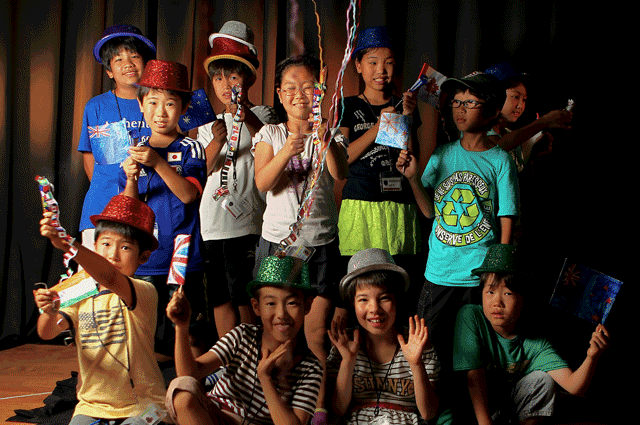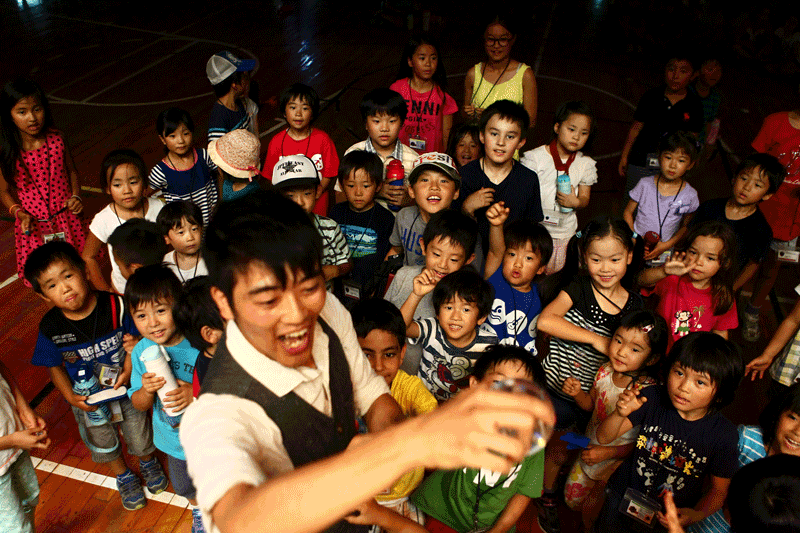If someone explained to you how to ride a bicycle in the classroom, but never gave you the chance to practice, how well do you think you would do on your first attempts at riding around the block? If you’ve ever tried to learn a new skill, you are well aware that putting new knowledge into practice is often the best way—if not the only way—to really learn something.
Of course, formal learning in the classroom will always be the cornerstone of any school’s academic programs, but it is becoming more and more clear that students do best when they can use practical, and fun, projects that allow them to test themselves and find connections across subjects.
This is something that students, teachers and administrators at Aoba-Japan International School have seen for themselves as they’ve developed their Extension and Summer School Programs over the past few years. With the backing of new parent company BBT, the school has made significant strides in improving physical infrastructure—most recently, new football and basketball areas, and big changes are coming to the classrooms themselves. But some of the most important steps include a move towards the International Baccalaureate curriculum and a set of after-school programs that “move international school education out of the ‘September to June, 9 am to 3 pm mindset,’ and away from the ‘foreign students only’ paradigm,” as Greg Culos, Director of Development at Aoba-Japan, explained.
One approach that these programs use to help students experience a new learning approach is to rethink one of the fundamental systems for organizing any school: grade levels. “Rather than following the traditional model of students in classes, the entire population of students had as many opportunities as possible to participate on projects together. In the first year we did this by creating groups for particular activities that allowed older students to work with younger students. This generated an environment where the older kids acted as mentors and friends/supporters of the younger kids,” Culos explained. The following year, students were divided into two different kinds of groups—one for students at the same grade level, and another made up of a cross-section of ages/grade levels. This arrangement made for an even stronger sense of community, despite the fact that enrollment in the program has doubled year after year.
In addition to a variety of activities and projects that took place on campus, participants in the summer school programs visited locations across the Greater Tokyo area, including many museums, an assortment of Embassies, Mt. Takao, Ome River, the Ara River, and many more interesting places. Students involved in the programs are able to get involved in a variety of educational and entertaining activities taught by a group of certified teachers, instructors, and coaches from around the world.
Most of the students in Aoba’s Summer Camp are Japanese, and not native English speakers. This is something that Culos sees as intrinsically linked to the school’s larger goal: “providing an accessible and meaningful point of interaction between the local and global populations by providing opportunities that will help Japanese students become more internationally minded themselves. In an insular country such as Japan, one of the roles of the international school should be to provide an experience of accessible cultural and social diversity.” So, as students are mixed across grade levels in the Summer Program, Japanese and native English speakers are also integrated, creating another level of linguistic and cultural sharing.
In January, the school launched an afternoon program, AJE Afternoons, which provides students with the opportunity to take a wide variety of applied learning opportunities that range from technology and robotics to dance, music, acting and more. Another new addition is the Saturday Camp series that focuses on English-language learning.
All of these programs are open to students who attend Aoba-Japan, as well as to students who live nearby. At the same time, the school is actively recruiting students from overseas, which adds yet another dynamic dimension to this new stage of the school’s development, making it an enriching and exciting educational environment for domestic and international students alike.
For more information about Aoba-Japan International School’s extension programs please visit the official website. www.japaninternationalschool.com
Updated On January 30, 2023









